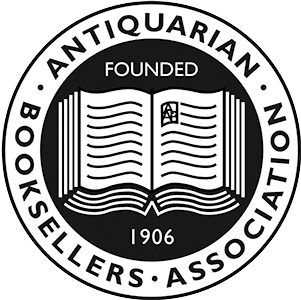London: printed by N. Blandford, for T. Green,, 1728. Hesiod's genealogy of the Greek gods in English for the first time Rare first collected edition in English, including the first English translation of the Theogony and the second translation of Works and Days. This copy is in a handsome contemporary binding, from the library of the English Unitarian minister and writer John Disney, with his gilt monogram and armorial crest on the covers. Prior to this edition, the only English translation of Hesiod was a version of The Works and Days by George Chapman, published with the title The Georgics of Hesiod in 1610 and now exceedingly rare. The present version by Thomas Cooke appeared during the Augustan heyday of English Georgic poetry - which also included Gay's Rural Sports (1720), Pope's Windsor Forest (1717), and Thomson's The Seasons (1730) - and is embellished with an attractive frontispiece by William Hogarth depicting a bust of Hesiod from the Pembroke Collection at Wilton. Cooke's Theogony later became a major source of inspiration for William Blake, especially in the introduction of his Songs of Innocence (1789). This translation remained standard until Sir Charles A. Elton's edition of 1815. The list of subscriber includes the Scottish poet and publisher David Mallet, the novelist Samuel Richardson, the Anglo-Irish physician and collector Hans Sloane, and Richard Savage, poet and friend of Samuel Johnson. The 172 subscribers ordered a total of 271 copies. Cooke (1703-1756) was a prolific translator of the classics. This version of Hesiod was his most acclaimed work, which gained him the nickname "Hesiod Cooke". He also worked on Moschus, Bion, Cicero, Terence, and Plautus. Cooke is often remembered for a quarrel with the poet Alexander Pope; despite Cooke's attempt to make peace by sending Pope a copy of his Hesiod in 1728, Pope made him one of the dunces in his Dunciad, which was published in the same year. This work is rare in commerce, especially in a contemporary binding as here. We have traced only two copies at auction in over 60 years, both of which were in a modern binding. Provenance: John Disney (1746-1816) was a writer on religion, and perhaps interested in Hesiod as a fundamental source of information about ancient Greek customs and beliefs. Disney's major works included biographies of latitudinarians such as Arthur Ashley (1785) and Edmund Law (1800) and Unitarians such as John Jebb (1787) and Michael Dodson (1800); Disney's sermons were published in 1793 and 1816. "As a minister, memoirist, and a religious and political writer Disney was an important figure in the development of English Unitarianism" (ODNB). 2 parts in 1, quarto (225 x 165 mm). With 2 engraved frontispieces, the first by Hogarth. Contemporary panelled calf, spine with raised bands, gilt decoration in compartments, red morocco label, front cover with gilt monogram "JD" of John Disney (Toronto stamp 1), rear cover with Disney's gilt lion crest (Toronto stamp 2), board edges tooled in gilt, edges sprinkled red. Contemporary annotation mentioning Hogarth's portrait of Hesiod on rear free endpaper verso, neat contemporary manuscript corrections in margin of two leaves. Extremities rubbed, joints cracked, but holding, couple of scratches on rear cover, front inner hinge sometime professionally and discreetly reinforced, closed tear to rear free endpaper and pastedown skilfully repaired, endpapers slightly browned and foxed, light toning to initial and final gatherings, faint damp stain to title page of second part, sporadic mark to contents, otherwise remarkably bright and clean. A very good copy with wide margins. Foxon I, p. 341; Lowndes IV, p. 1057. "Disney, John (1746-1816)", in Toronto Database of British Armorial Bindings, available online.















